The contribution of female architects to architecture has again been ‘airbrushed’ or underrepresented. We here honor women architects did more than shatter a centuries-old glass ceiling by helping shape the industry. These are the female architects, who challenged the norm to create a new order without which others wouldn’t be able to do the work they’re doing today.
Lady Elizabeth Wilbraham
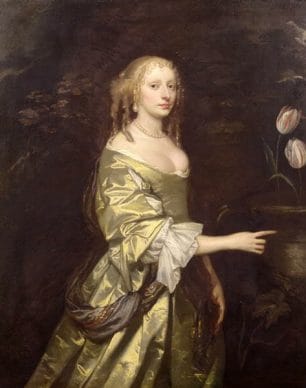
Lady Elizabeth Wilbraham (1632–1705) considered UK’s first female architect, designed grand houses, churches and buildings at a time women weren’t allowed to practice the art. Around 400 buildings including the Belton House (Lincolnshire), Uppark House (Sussex), Windsor Guildhall (Berkshire), Staffordshire family home, Weston Hall, and parts of Buckingham Palace and the Oxford and Cambridge campuses are attributed to have been designed by her. Due to Lady Elizabeth Wilbraham’s aristocratic position she could not be seen having a direct involvement in construction so Elizabeth promoted herself as a “grand patroness of architecture” and used her male pupils the popular male architects of the day such as Henry Bell, William Bruce, the Fitch brothers, Robert Grumbold, Hugh May, Edward Pierce, Roger Pratt, the Earl of Ranelagh, William Samwell, Sir Christopher Wren, Edward Stanton, and William Winde to pass her work and designs as theirs. Wilbraham was incredibly productive as she did not have to supervise any construction work.
Wilbraham, became interested in architecture in her teens and spent her extended honeymoon in the Netherlands and Italy, where she studied architecture. In Netherlands she studied with Pieter Post and stopped at Landshut in Germany on her way to the Veneto and Rome; some of her most important building including the 1662 Queen’s Gallery at Somerset House are the result of her inspiration from the Italian-designed Stadtresidenz at Landshut. While in the Veneto, she became acquainted with the works of Palladio.
Marion Mahony Griffin
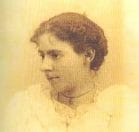
Marion Mahony Griffin (1871 –1961) the first employee of Frank Lloyd Wright hired as draftsman. She was one of the world’s earliest licensed female architects to have graduated in architecture from MIT. Her influence can be seen over his Prairie style architecture, she also designed leaded glass, furnishings, light fixtures, murals, and mosaics for many of his houses. She was the architect for the David Amberg Residence (Michigan) and the Adolph Mueller House (Illinois). Mahony Griffin inspired by Japanese woodblock prints did watercolour studies of Wright’s plans for which he never gave her credit.
After marrying in 1911 she set up a practice with her husband, won the commission to design Austria’s Canberra. Mahony Griffin trained draftsmen and handed commissions for her Australian office for over 20 years. She did the Capitol Theatre in Melbourne. Later the couple moved to Lucknow, India in 1936 to design a university library. She returned to America following the death of her husband in 1937, and wrote an autobiography about her architectural work but refrained from working in architecture until her death in 1961.
Sophia Hayden Bennett
Sophia Hayden Benett (1868-1953) an American architect from Santiago was the first woman to receive an architecture degree in 1890 from MIT. She is known for her beautiful designs, which feature Italian Renaissance detailing, straight-forward massing, and the use of projecting pavilions and skylights. In 1891, at the age of 21, she entered a competition for the design and execution of the Woman’s Building, part of Daniel Burnham’s gargantuan World’s Columbian Exposition in Chicago. Her design won the first prize out of the field of thirteen entries. But during the construction of the building, she suffered undue stress leading to a break-down and was placed in a sanitarium for enforced rest. After the exhibition, she never worked as an architect again.
Elisabeth Scott
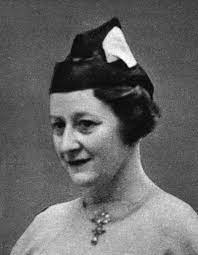
Elisabeth Scott (1898 –1972) become the first female architect in the UK to win an international architectural competition with her design for the Shakespeare Memorial Theatre in Stratford-upon-Avon. Scott was a great niece of the architects George Gilbert Scott and George Frederick Bodley, founders of Watts & Co. Giles Gilbert Scott, the architect of Liverpool Cathedral.
For the completion of the Stratford-upon-Avon project Scott made the decision to hire as many women as possible to assist her. She also worked with the Fawcett Society to promote wider acceptance of women carrying out stereotypically male roles. She also worked on the Marie Curie Hospital in Hampstead, later expanding the cancer hospital, Newnham College, Cambridge, Shakespeare Memorial Theatre. Scott returned to her hometown of Bournemouth and designed the iconic Pier Theatre. Scott was also a member of the Bournemouth Town Council architects’ department and practiced till age of 70.
Dame Jane Drew
Dame Jane Drew (1911 –1996) is a renowned British architect, an early proponent of Modernism and responsible for bringing Le Corbusier’s work to India. An architect and town planner, Drew was educated in the AA in London and became one of the principal founders of MARS – an English modernist movement based on Le Corbusier’s CIAM.
She studied architecture at the Architectural Association. She was involved in the building of the Royal Institute of British Architecture, a lifelong fellow of in addition to being the first woman elected on to its council. Principal founders of the Modern Movement in Britain, during the Second World War she started an entirely female architectural practice in London. During this time she undertook the completion of 11,000 air-raid shelters for children in Hackney.
Drew created a partnership with her husband and fellow architect Maxwell Fry to built hospitals, universities, housing estates and governmental offices in countries like Nigeria, Ghana, and Ivory Coast. Impressed by her work, the Indian prime minister asked her to design Chandigarh, the new capital of Punjab. She convinced fellow modernist Le Corbusier to contribute, creating a close collaboration. Drew used the city to experiment with new socially conscious housing strategies, affecting the housing design throughout India. Due to her contribution to architecture, Drew was awarded many honourary degrees and doctorates from universities such as Harvard and MIT.
Lina Bo Bardi
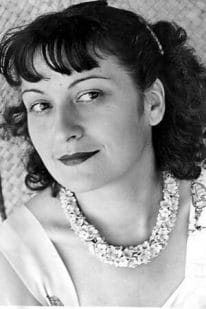
Lina Bo Bardi (1914 –1992) an Impressive activist, an emotional Italian architect she designed daring buildings which merge modernism with populism. In 1939 she graduated from Rome College of Architecture, moved to Milan to set up her. A year later, she was invited to become director of architecture and design magazine Domus. She next moved to Brazil in 1946, where she designed the São Paulo Museum of Art, an iconic building, suspended above a 70-metre-long square. Her other projects include the “Casa de Vidro” glasshouse, SESC Pompéia Factory, converted Solar do Unhão sugar mill to a craft museum. One of her ‘inventions’, is the Teatro Oficina where she created a variable space of re-purposed materials that dissolved the distinction between actor and audience.
Bo Bardi founded Habitat Magazine in 1950 alongside her husband and was its editor until 1953. She also established the country’s first industrial design course at the Institute of Contemporary Art. She died in 1992 with many projects left unfinished.
Norma Merrick Sklarek
An architectNorma Merrick Sklarek (1926 –2012) whose life was filled with many firsts – the first black woman to hold an architect license in both New York and California, the first black woman to become a member of the American Institute of Architects – later elected a fellow of the organisation. She faced tremendous discrimination throughout her life making her achievements all that the more impressive.
Sklarek attended Barnard College for a year, gaining liberal arts qualification which permitted her to study Architecture at Columbia University. In 1950, she graduated with a B. Arch. – one of two women and the only African American person in her group. During search for work, she was rejected by 19 firms. She finally secured an architecture job with Skidmore Owings & Merrill in 1955.
She eventually became director of architectural firm Gruen Associates. Her memorable projects include the Pacific Design Center, San Bernardino City Hall in California, the US Embassy in Tokyo, and LAX Terminal 1 which she finished on time and under budget. She left Gruen and Associates to co-found Sklarek Siegel Diamond, the biggest female only architecture in the country.
MJ Long
Mary Jane (1939 –2018) ‘MJ’ Long completed a degree in architecture at Yale before moving to England, worked with St John Wilson and later married. She oversaw the operational aspects of the design for The British Library alongside her husband, but was not given credit.
Long is also known for her architectural practice, MJ Long Architect, which she ran from 1974 to 1996 when she designed several purpose-built artists’ studios for people such as Peter Blake, Frank Auerbach, Paul Huxley, and RB Kitaj. With her friend Rolfe Kentish in 1994, she set up another firm called Long & Kentish. The firm’s first endeavour was a £3 million library project for Brighton University. Long & Kentish designed the National Maritime Museum in Falmouth and the Jewish Museum in Camden. Three days prior to her death she submitted her last scheme, the restoration of a Cornish artists’ studio.
Dame Zaha Hadid
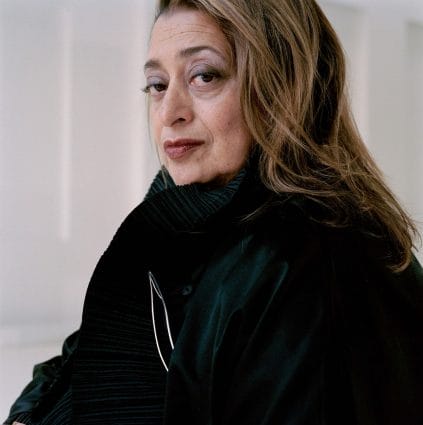
Dame Zaha Hadid (1950 –2016) an Iraqi-born British architect the most famous female architect to have won the Pritzker Prize in 2004, a demonstration of commitment, talent, and vision. She was awarded the RIBA Gold Medal – Britain’s top architectural award the year of her untimely death. She left a £67 million fortune when she passed in 2016.
She has designed leisure centres to sky scrapers, Riverside Museum in Glasgow, the London Aquatics Centre for the 2012 Olympics, the Guangzhou Opera House and the Generali Tower in Milan – her striking buildings are acclaimed for their organic, flowing forms. She studied art at the American University of Beirut before starting her career at the Architectural Association in London.
She is referred to as a ‘starchitect’ and Time Magazine named Hadid among the 100 most influential people on the planet in 2010.
Image Credit: To Respective Owners





















